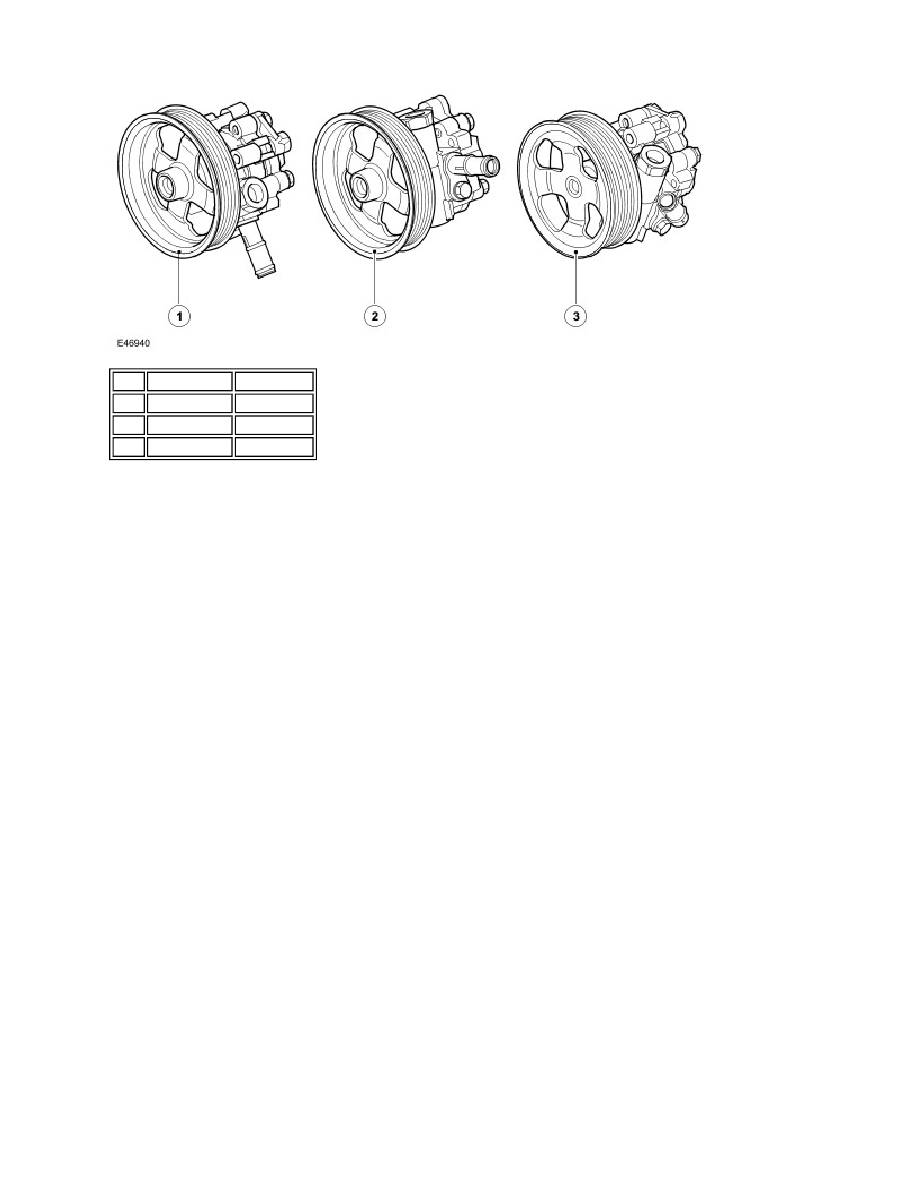LR3/Disco 3

The power steering pumps used on the three engine variants are basically the same pump with different connection
fitments, therefore they are not interchangeable. The pump is a positive displacement, vane type pump which supplies
hydraulic pressure to the steering gear valve unit. The pump is driven by a Poly Vee belt from the crankshaft pulley and
output from the pump increases proportionally with engine speed. A self-adjusting tensioner is fitted to maintain the
correct tension on the belt.
The pump has an internal pressure relief valve which also incorporates a flow control valve. The pressure relief valve
limits the maximum pressure supplied to the steering gear to 114 bar (1653 lbf in
2
) ± 4 bar (58 lbf in
2
). The flow control
valve limits the maximum flow to 8.8 l/min (1.93 gal/min) ± 0.5 l/min (0.1 gal/min) regardless of engine speed. The pump
has a displacement of 9.6 cc/rev (0.58 in
3
/rev).
A shaft runs longitudinally through the pump. One end of the shaft is fitted with a pressed-on drive pulley, the opposite
end of the shaft is closed by a cover. The shaft runs in bearings located in the body and oil seals at each end of the shaft
prevent leakage of hydraulic fluid.
The pump contains ten vanes which rotate within a cam ring and are driven by the shaft. As the vanes rotate, the cam
ring causes the space between the vanes to increase. This causes a depression between the vanes and fluid is drawn
from the reservoir via the suction hose into the space between the vanes.
As the shaft rotates, the inlet port is closed to the vanes which have drawn in fluid, trapping the fluid between the vanes.
The cam ring causes the space between the vanes to reduce and consequentially compresses and pressurises the
hydraulic fluid trapped between them.
Further rotation of the shaft moves the vanes to the outlet port. As the vanes pass the port plate the pressurised fluid
passes from the pump outlet port into the pressure hose to the steering gear.
The pressurised fluid is subject to control by the flow control and pressure relief valve. The flow control valve maintains a
constant flow of fluid supplied to the steering gear irrespective of engine speed variations. The pressure relief valve
controls the pressure on the output side of the pump. A metering orifice is included in the discharge port of the pump. If
the pressure in the orifice reaches a predetermined level, a spring loaded ball in the center of the flow control valve is
lifted from its seat and allows pressurised fluid to recirculate within the pump.
The pressure relief valve will operate if the discharge from the pump is restricted, i.e.; steering held on full lock. If the
output from the pump is blocked, all output is recirculated through the pump. In this condition, as no fresh fluid is drawn
into the pump from the reservoir, the fluid temperature inside the pump will increase rapidly. Consequentially, periods of
operation of the steering gear on full lock should be kept to a minimum to prevent overheating of the pump and the fluid
within it.
RESERVOIR
Item Part Number Description
1
-
4.0L V6
2
-
4.4L V8
3
-
TdV6
